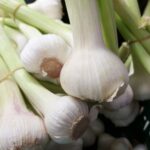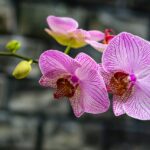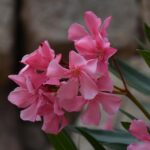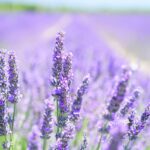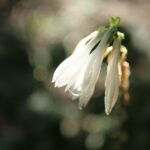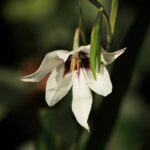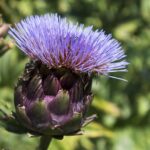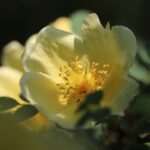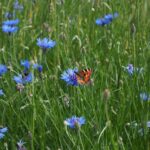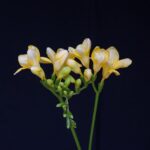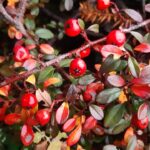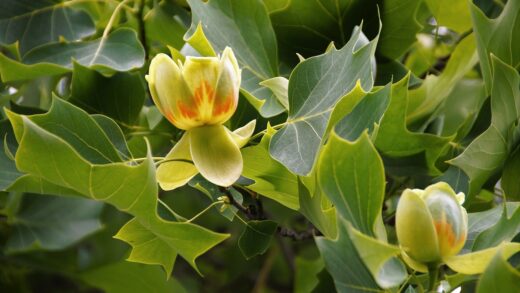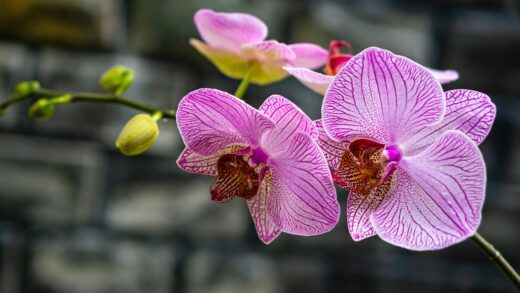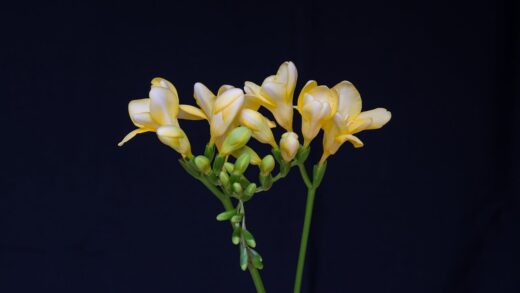The Kousa dogwood, scientifically known as Cornus kousa, is a stunning ornamental tree that captivates with its elegant, horizontally spreading branch structure and star-shaped flowers that bloom in spring. Fortunately, this plant is quite low-maintenance and does not have special pruning requirements, which is excellent news for beginner gardeners. The primary goal of pruning is not drastic shaping but rather emphasizing the tree’s natural beauty, maintaining its health, and preventing diseases. A correctly performed intervention helps maintain a breezy yet harmonious crown shape, allowing for optimal light and air circulation among the branches, thereby reducing the risk of fungal infections.
The most crucial aspect of pruning is proper timing, which is key to the tree’s health and flowering ability. Pruning the Kousa dogwood should ideally be done during the late winter or early spring dormancy period, before the buds break. During this time, the tree has not yet begun intensive sap circulation, so wounds heal faster, and sap leakage, which could weaken the plant, is minimized. Alternatively, the period after flowering can also be suitable for minor corrective cuts, but one must proceed more cautiously then. Never prune the tree in the autumn, as fresh cuts cannot heal properly before winter sets in, which can lead to frost damage and infections.
Pruning at the wrong time can have several negative consequences that detract from the tree’s aesthetic value and vitality. For example, if the intervention is carried out in spring before flowering, you can easily remove the buds from which the beautiful flowers would develop, meaning you would have to forgo the spectacular floral display for that year. More vigorous pruning during the growing season can cause excessive sap flow (bleeding), which attracts pests and pathogens and represents a significant energy loss for the tree. Improper intervention weakens the tree’s resistance and, in the long run, can even lead to its demise, so you should always proceed with caution.
Before starting the work, it is essential to prepare the right tools, which must be clean and extremely sharp. Dull tools crush plant tissues, making wound healing difficult and opening the door to infections. For thinner branches, a good quality pair of pruning shears is sufficient, while for thicker branches, about 2-5 centimeters in diameter, you will need loppers to ensure a clean cut surface. For even thicker branches, use a sharp-toothed saw, and always ensure a precise, smooth cut so the tree can close the wound as easily as possible. Disinfect the tools with alcohol or a bleach solution before and after each use to prevent the spread of pathogens.
Formative pruning of the young Kousa dogwood
Formative pruning during the first few years of a young Kousa dogwood’s life is fundamental to establishing the tree’s future structure and stability. During this period, the goal is to develop a strong central leader and a well-arranged framework of branches that tend towards a horizontal orientation. Formative pruning helps prevent future structural problems, such as an overly dense crown or branches that cross and rub against each other. This care ensures that the tree will later adopt a healthy, aesthetic, and proportional form, becoming a jewel of the garden. Interventions should always be carried out during the dormant period so the tree can focus its energy on spring growth.
The first step is to identify and strengthen the central leader, which forms the vertical axis of the tree. If you find several competing leaders, choose the strongest and straightest shoot and remove the others at their base. Next, select 3-5 strong scaffold branches spiraling around the trunk, which will be the tree’s main support pillars in the future. It is important that these branches do not originate from the same point but are at a vertical distance of at least 15-20 centimeters from each other and form an optimal angle of about 45-60 degrees with the trunk. Remove branches that grow too steeply or too flatly, as they are prone to breaking.
During formative pruning, special attention must be paid to removing incorrectly growing branches that could cause problems in the long run. These include branches that cross or rub against each other, causing injuries and opening pathways for pathogens. You must also remove shoots that grow inwards, towards the center of the crown, as they thicken the foliage and hinder air circulation. Also, prune off water sprouts and suckers emerging from the trunk or root collar, as they unnecessarily divert nutrients from more valuable parts of the tree. The goal is to create an open, airy crown structure.
Properly making the cuts is essential for quick and trouble-free healing. Always make the cut just above a bud or a lateral branch, with a slightly slanted cutting surface so that water can run off it. When removing thicker branches, use the three-cut technique: first, make a small undercut on the bottom of the branch, then cut off the bulk of the branch further out from the trunk, and finally, remove the remaining stub along the branch collar without damaging it. The branch collar contains the cells responsible for closing the wound, so protecting it is critical. Never leave long stubs, as they heal poorly and can become starting points for decay.
Maintenance pruning of the mature tree
When the Kousa dogwood reaches its mature size and its final shape is established, the pruning strategy changes. Instead of formative pruning, the focus shifts to the long-term preservation of the tree’s health and aesthetic appearance, which is called maintenance pruning. This intervention is much less intensive and is usually performed once every year or two during the dormant period. The goal is to maintain the crown’s airiness, remove diseased or damaged parts, and preserve the tree’s natural, elegant habit. Regular but gentle maintenance pruning contributes to the tree’s long life and abundant flowering.
The basic rule of maintenance pruning is the “three D’s” principle: removing diseased, damaged, and dead branches. First, thoroughly inspect the tree’s crown and look for any branches showing signs of disease (discoloration, cankers), mechanical damage (breakage, cracks), or clear signs of being dead. These branches must be completely removed, cutting back to a healthy part or, if necessary, pruning them off at the base. This cleaning-up not only improves the tree’s appearance aesthetically but also prevents the spread of pathogens and eliminates potentially hazardous branches prone to breaking.
Following the clean-up pruning, the goal is to thin the crown to improve light penetration and air circulation within the foliage. This reduces humidity among the branches, creating unfavorable conditions for fungal diseases like powdery mildew. Carefully remove branches that are too dense, grow inwards, or cross each other. When thinning, strive not to drastically change the tree’s natural shape but simply to create a more airy, transparent structure. Never remove more than 20-25% of the foliage at once, as this would put too much stress on the tree.
Maintenance pruning also includes the continuous control of water sprouts and suckers. Water sprouts are vigorous, vertically growing shoots that usually appear on the upper side of scaffold branches, while suckers originate from the root collar or roots. Both types of shoots grow extremely fast and unnecessarily waste the tree’s energy and nutrients while detracting from the crown’s aesthetic appearance. These shoots should be removed as soon as possible after they appear, before they become woody. Their regular removal helps maintain the tree’s balanced growth and shape.
Special pruning techniques and drastic cutting back
In some cases, standard maintenance pruning is not enough, and a more specialized intervention is needed to restore the health or shape of a Kousa dogwood. This could be, for example, the rejuvenation of an old, neglected, overly dense, or leggy tree, which is called rejuvenation pruning. This is a more intensive procedure aimed at stimulating the growth of new, healthy shoots and restoring the tree’s vitality. Rejuvenation pruning must always be carried out with great care and expertise, as an improperly executed drastic intervention can even lead to the tree’s death. This technique should only be used when it is truly unavoidable.
Rejuvenation pruning is usually carried out gradually over several years to avoid shocking the tree. In the first year, remove all dead, diseased, and damaged branches, as well as about one-third of the oldest, least productive scaffold branches. Cut these branches close to the trunk, sparing the branch collar, to make room for new shoots. Continue the process over the next two to three years, removing a portion of the remaining old branches each year while selecting and training the most viable new shoots that will form the future scaffold system. This gradual approach allows the tree to regenerate and develop a completely new, healthy crown.
Drastic cutting back, also known as topping, is an extremely harmful and unprofessional practice that should be avoided at all costs with Kousa dogwoods. This method involves the indiscriminate cutting back of the tree’s main branches, which leaves huge, slow-healing wounds and ruins the tree’s natural structure and beauty. In response to topping, the tree panics and produces a multitude of weak, densely growing water sprouts that break easily and are susceptible to diseases. Although the goal is size reduction in the short term, in the long run, it results in an ugly, sickly, and dangerous tree, so this method should never be used.
Post-pruning care is just as important as the intervention itself, as it helps the tree recover quickly. After pruning, it is advisable to water the tree thoroughly, especially if the intervention occurred during a dry period. A layer of mulch (e.g., pine bark or compost) spread around the base of the tree helps to retain soil moisture, regulate its temperature, and suppress weeds. Wound dressings are generally not recommended for larger cuts nowadays, as research shows the tree’s natural defense mechanisms are more effective, but it is important to regularly check the healing of the wounds and watch for any signs of infection.

